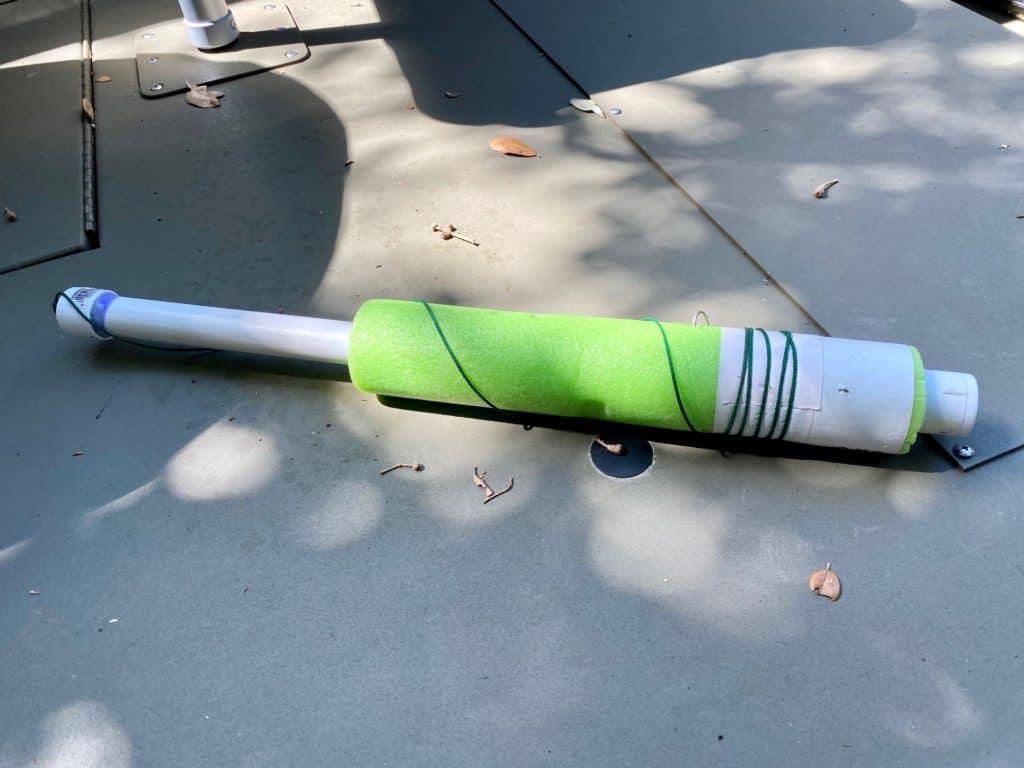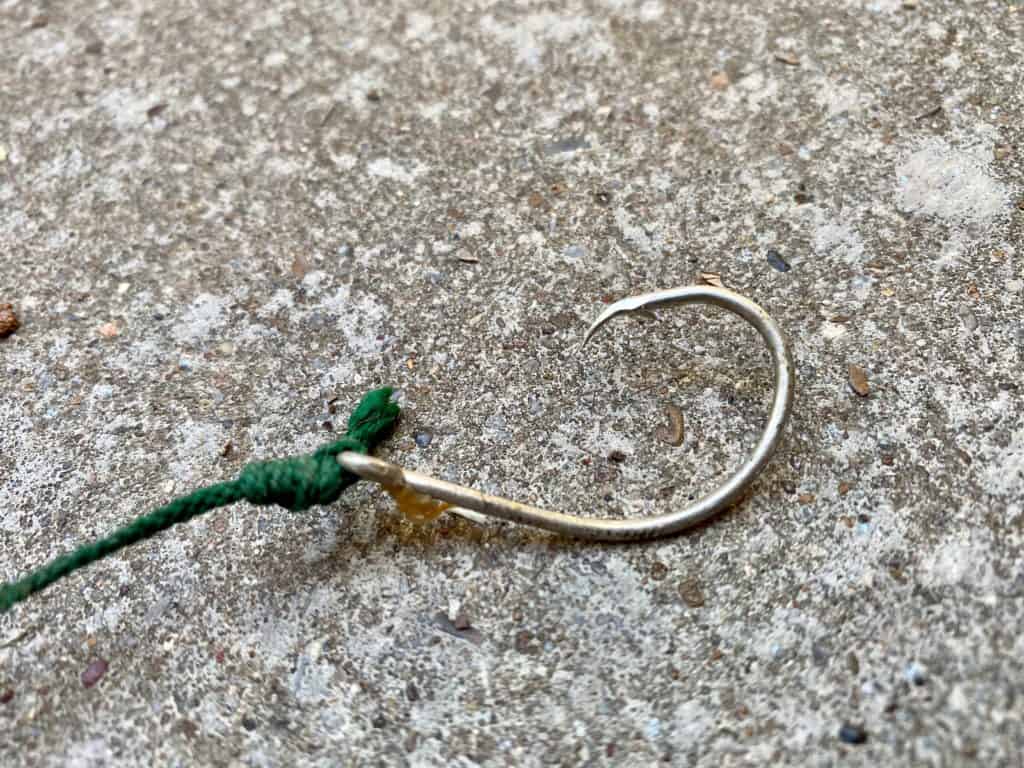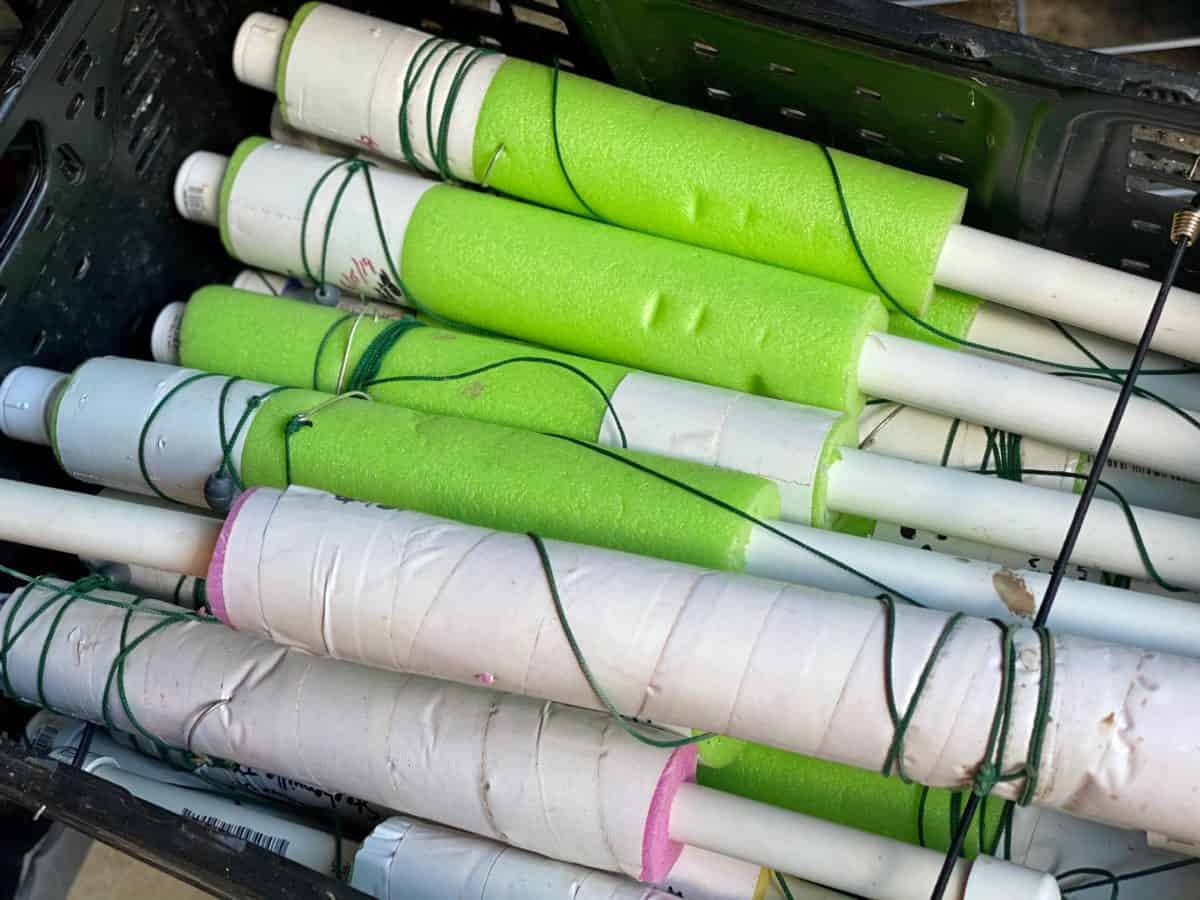Have you ever been driving home after fishing, while you were wishing you had a few more catfish fillets for the fryer? Better yet, maybe you are looking for a way to stockpile these delectable fish in your freezer in short order? Jug fishing is one of the most effective methods of harvesting catfish.
Jug fishing involves the use of multiple floating rigs scattered across a body of water to catch catfish. These rigs are typically constructed with a float, a weight, and a hook suspended at a particular depth.
The Rig
One of the beautiful things about jug fishing is its simplicity. There are many great variations of this rig, but the typical components include a float of some type, line, hook, weight, and the bait.
Jug Fishing Floats
Anglers have many choices when choosing the float for their juglines. Think of things like:
- Bleach bottles
- Detergent bottles
- Sod bottles
- Pool noodle
- Etc.
Bleach or Detergent Bottles
Bleach or laundry detergent bottles make tremendous floats due to their heavy-duty plastic construction.
Soda Bottle
Another old tried and true jugline float is the two-liter soda bottle. The soda bottle float comes with the added benefit of tipping in a vertical orientation when a fish is on, allowing for a visual indicator, easily visible across the lake.
Pool Noodle

Another popular float involves using a section of brightly-colored pool noodle with a piece of ½” PVC pipe. The noodle is wrapped around the PVC pipe and the pipe is capped at both ends. The pipe is then drilled on one end to accept the fishing line. This float allows for a clean, compact, and professional rig.
Jug Fishing Line
Jug fishing line types vary by water conditions, expected fish size, and personal preference.
Monofilament
Some anglers will stick to monofilament in the form of 80 lb test. This line offers the most subtle presentation but comes at the cost of excessive line curling, which can make setting out multiple rigs from the boat difficult.
Tarred Nylon
Tarred nylon line is an old favorite of many veteran jug anglers. This line is a braided nylon line with a tar coating to prevent fraying. Tarred nylon line is usually offered in tensile strengths of above 150 lbs, making it the superior choice if one is pursuing record-size catfish.
Braided Nylon
Standard braided line is another typical jug fishing line. This line offers the best of both worlds of the monofilament and the tarred nylon. Line curling is kept to a minimum, and at the same time, the line diameter to tensile strength ratio is optimized.
Jug Fishing Hooks

Circle hooks are standard fishing tackle when utilizing jug fishing techniques. These hooks have a point that is almost perpendicular to the hook shaft, essentially forming a circle, hence the name of the hook.
The main benefit of utilizing these hooks is their high probability of mouth-hooking fish. If an angler is jug fishing with the intention of releasing the fish that they catch, this benefit is of utmost importance. A mouth-hooked fish has a much higher likelihood of surviving versus a fish that swallowed the hook.
Depending on the size of the catfish that you are looking to target and the size of the bait you are using, circle hook sizes for jug fishing vary anywhere from 1/0 to 9/0.
Jug Fishing Weights
There are two distinct methods of rigging weights for jug fishing, one being free-floating and the other being fixed. Free-floating works well on rivers, or if you are trying to drift a section of water with a stiff wind.
A fixed rig works well in many conditions. The main difference in these two rigging methods is the size of the weight and the location of the weight relative to the other tackle components.
A free-floating rig utilizes a weight rigged between the float and the hook. The size of this weight can vary from 1 to 6 ounces, and the main intent of this weigh is to get the bait down to an area where the catfish are feeding.
A fixed rig involves locating the weight at the very end of the line, with the hook being located between the weight and the float. The size of this weight can vary from 1 to 5 pounds, and anglers will oftentimes use several hooks at different depths to understand the depth at which the catfish are feeding.
Jug Fishing Bait
Many different types of catfish bait exist for jug fishing. This is a good thing depending on where you are and what you have available. Since catfish are know to eat lots of different things, you have a lot options. Think of baits such as:
- Cut bait like shad, carp, and sunfish
- Chicken liver
- Hot dogs
- Worms
- Etc.
Cut Bait
One of the more common baits is what is referred to as cut bait. Cut bait is simply cut up pieces of fish. Carp, shad, and sunfish are the main species used for cut bait.
One of the reasons that cut bait is so effective is largely due to the catfish’s great sense of smell. The oily and fleshy bait emits quite the odor, and it is super effective at luring in catfish from great distances.
If you are unable to conjure up some cut bait for your next catfishing-outing, have no fear! Many fantastic catfish baits can be purchased directly from your nearest supermarket.
Chicken Liver
Chicken livers are an old-time favorite of many catfish anglers. These livers emulate many of the good characteristics of the cut bait and can usually be purchased at a very reasonable rate.
Hot Dogs
If chicken livers are not available, many anglers find great success with using pieces of hot dogs.
Catfish Species
The three main types of catfish include the channel catfish, blue catfish, and the flathead catfish.
Channel Cat
The channel catfish can be found in a variety of habitats, ranging from small farm ponds to large rivers. These fish will take cut bait, worms, chicken livers, and an assortment of other baits.
Channel catfish are the smallest of the three main catfish species, with most not growing larger than 30 lbs.
Blue Cat
Blue catfish are typically found in larger rivers and lakes. Blues will take much of the same bait used for channel catfish, but blue catfish also have a unique trait in taking lures, sometimes well off the bottom.
Twenty to fifty pounds is an average size for a mature blue catfish, but one-hundred-pound fish are not unheard of.
Flathead
Flathead catfish are again found in larger rivers and lakes. However, this species has a diet that is fairly unique in comparison to other catfish species: Flatheads will almost always only consume bait that is alive.
An easy solution for jug fishermen is to use a live chub or other baitfish. My favorite bait is bluegill for these. Flathead catfish are a similar size to blues, with true trophy-sized fish weighing in at over one-hundred pounds.
How to Jug Fish
Depending on state regulations, most anglers will load up a boat with 10 to 20 juglines (maybe more) and spread these rigs around likely catfish habitat. Catfish, like many other types of fish, tend to spend much of their time around areas with some type of structure.
While most catfish tend to feed on the bottom or directly above it, it should be noted that blue catfish will suspend at different levels in the water column and are known to sometimes strike just below the surface.
Jug fishing anglers will typically deploy these rigs before sunset and collect them after sunrise the following day. This gives catfish time to find the baits during the night when they are most active and feeding.
One of the interesting things about jug fishing is its effectiveness. On a typical night bank fishing with a rod and reel, an angler may have out up to three or four lines (depending on state regulations), and they can potentially fish a 20 to 50-yard section of shoreline.
Jug fishing effectiveness often comes down to simple statistics and probability. With more hooks deployed, and with many rigs deployed in a vast area, the odds of catching catfish with jug fishing tactics can be much greater than the catch ratio of bank fishing.
Conclusion
I encourage all my fellow anglers to read up on jug fishing regulations in their respective states and jurisdictions. Jug fishing is a topic with much controversy, and many states do not permit any type of jug fishing.
Many more states regulate many aspects of jug fishing, from the number of rigs allowed to be deployed at a time, to the number of hooks per line, to types of licenses and permits required.
If your state permits jug fishing for catfish, I highly recommend trying it out. Once you experience the excitement of seeing a float bobbing or the adrenaline from hand-lining in a big cat, you will be hooked!

